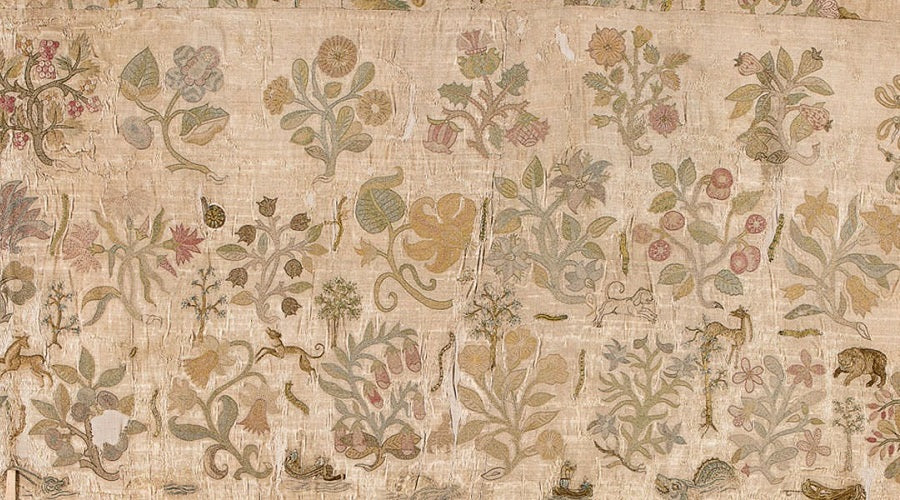
Lost Dress of Elizabeth I

Bacton Altar Cloth © Historic Royal Palaces Courtesy of St Faith's Church, Bacton.
A richly embroidered altar cloth, preserved for centuries in a small rural church in Bacton, Herefordshire, has recently been identified by experts as a piece of a sixteenth century dress, which is thought to have belonged to Queen Elizabeth I. The cloth has been painstakingly conserved and will now form the focal point of a new exhibition at Hampton Court Palace ‘The Lost Dress of Elizabeth 1′, open from 12 October – 23 February.

The altar cloth was found hanging in a glass case in St Faith’s Church, having been retired as an altar cloth over a hundred years ago. Local historian and author Ruth Elizabeth Richardson became interested in the cloth while attending church, and researched the connection with Blanche Parry, one of Elizabeth I’s most faithful servants.
Blanche was born in Bacton; she began her 57-year service to Elizabeth I supervising the royal cradle rockers, and died as her Chief Gentlewoman of the Bedchamber. It is believed that the altar cloth was given to the church by her, or in her memory. It is known that the Queen would give Blanche her clothes and this piece of embroidery has motifs typical to the designs of the late 16th century and has a close resemblance to the bodice that can be seen in ‘The Rainbow’ portrait of Queen Elizabeth I, c.1600.
Hear more about how the Bacton Altar Cloth was identified as a piece of Elizabeth's clothing in this short film.
The Royal School of Needlework has partnered with the Palace to offer an Embroidery Class to view the exhibition and stitch three motifs inspired by the cloth: Daffodil, Rose and Thistle. Classes begin with a visit to see the Exhibition before the Palace opens and a talk from Eleri Lynn, Curator of Historical Dress for Historical Royal Palaces, who discovered the cloth.

Students will then go to the Royal School of Needlework’s apartments within the Palace to stitch the designs using the same Elizabethan techniques.
For class bookings, visit the Royal School of Needlework.
For more information on the exhibition, visit Hampton Court Palace.
